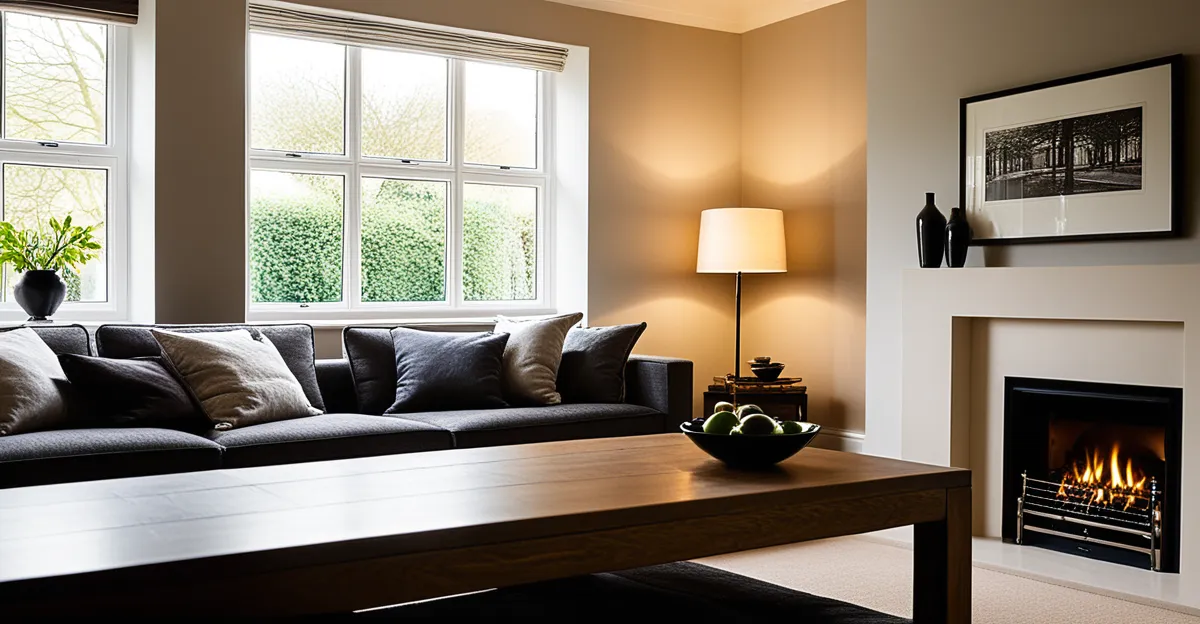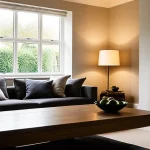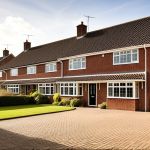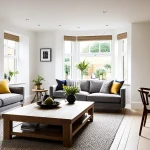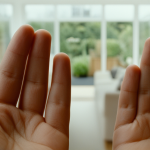Maximising Lighting Impact in UK Homes
Understanding how to combine ambient, task, and accent lighting is fundamental to enhancing interiors in UK homes. Ambient lighting provides general illumination, creating a comfortable base layer. Task lighting focuses on specific activities like reading or cooking, ensuring functionality. Accent lighting highlights architectural features or artwork, adding depth and style.
Layering lighting is key to crafting versatile spaces. In the often dim natural daylight conditions typical in the UK, this approach allows residents to adapt lighting to mood or need. For example, adjustable fixtures and dimmable lights enable changes from bright task illumination to soft ambient glow, supporting various activities and enhancing atmosphere.
In parallel : What Innovations Are Shaping the Future of UK Home Living?
Addressing the challenge of limited natural daylight, UK homeowners can incorporate light fixtures with warm tones to create a cozy feel. Reflective surfaces and strategic fixture placement enhance light distribution, making interiors appear brighter and more inviting. Employing these lighting techniques thoughtfully elevates the overall interior design while compensating for seasonal lighting constraints. This results in both practical and visually pleasing environments, tailored to diverse UK home settings.
Maximising Lighting Impact in UK Homes
To excel at enhancing interiors with effective UK home lighting, understanding the distinct roles of ambient, task, and accent lighting is essential. Ambient lighting sets the foundation by providing uniform illumination, crucial in rooms with little natural light. It prevents shadows and creates a comfortable visual environment. Task lighting targets activities that require focus, such as cooking or reading, by providing direct, concentrated light. This improves functionality and reduces eye strain. Meanwhile, accent lighting adds character by highlighting features like artwork, textures, or architectural details, lending depth and personality to spaces.
Also read : How Can UK Homeowners Reduce Energy Costs Efficiently?
Layering these lighting techniques offers the flexibility to shift a room’s mood and utility. For example, dimmers allow seamless transitions from bright task lighting to a softer ambient glow, accommodating different times of day and activities.
Addressing the UK’s limited natural daylight means adopting strategic lighting choices. Using fixtures with warm light tones counters the often cold outdoor conditions, creating inviting atmospheres. Reflective surfaces such as mirrors or glossy finishes amplify light distribution, maximizing impact with less energy. Combining these lighting techniques thoughtfully elevates design while tackling common UK daylight limitations efficiently.
Maximising Lighting Impact in UK Homes
Effectively enhancing interiors through UK home lighting relies heavily on the synergy of three core lighting techniques: ambient, task, and accent lighting. Ambient lighting offers a soft, overall glow, essential for daily activities and creating a welcoming atmosphere. Task lighting sharpens focus on specific functions like reading or cooking, providing clarity and reducing eye strain. Accent lighting adds dimension by spotlighting architectural details, textured walls, or artwork, enriching the aesthetic appeal.
Layering these lighting types delivers adaptability and mood versatility within spaces. By combining adjustable fixtures and dimmers, rooms can effortlessly transition from functional brightness to cozier, softer light. This flexibility supports the diverse needs of UK homeowners, adapting interiors to changing natural daylight and activity demands.
Limited natural daylight in many UK homes necessitates strategic use of warm light tones and reflective surfaces. For example, carefully placed lamps with warm bulbs can counterbalance the often grey outdoor light, producing a snug environment. Mirrors and light-colored finishes further boost light diffusion, amplifying the effectiveness of artificial sources. Thoughtful application of these lighting techniques elevates both the practicality and style of UK home interiors without overwhelming energy consumption.
Maximising Lighting Impact in UK Homes
Mastering lighting techniques in UK home lighting means blending ambient, task, and accent lighting to meet specific room needs. Ambient lighting acts as a foundational glow, providing uniform illumination necessary for general visibility. Task lighting supplements this base, focusing directly on activities such as reading or cooking, improving efficiency and comfort. Accent lighting adds another layer by drawing attention to architectural details or décor elements, enhancing the overall aesthetic.
Layering these types is vital for atmosphere and flexibility. Using dimmers or adjustable fixtures allows easy transitions between bright, functional lighting and softer, mood-enhancing light. This layering approach not only supports a variety of activities but also helps compensate for the UK’s often dim natural daylight.
Addressing limited daylight in UK interiors requires strategic choices. Incorporating warm-toned bulbs offsets the typical cold outdoor light, fostering a cozier atmosphere. Reflective surfaces like light-coloured walls or mirrors amplify available light, improving brightness without increasing energy use. By combining these lighting techniques, UK homeowners can balance practicality and style, overcoming natural lighting limitations while enhancing interiors effectively.
Maximising Lighting Impact in UK Homes
Effective UK home lighting integrates ambient, task, and accent lighting to serve diverse room functions. Ambient lighting provides a general, even illumination essential for visibility and comfort across all spaces. Task lighting targets specific activities—such as cooking or reading—by delivering focused brightness that reduces eye strain. Accent lighting enhances interiors by drawing attention to artwork, architectural details, or textured surfaces, enriching the room’s character and style.
The key to successful lighting techniques lies in layering these types. Layering not only supports different activities throughout the day but also changes the atmosphere to suit moods or occasions. For example, combining dimmable ambient lights with adjustable task lamps allows homeowners to effortlessly switch from bright, functional lighting to softer, relaxing tones. This flexibility is critical in UK homes, where natural daylight varies greatly with seasons.
Addressing the challenge of limited natural light, UK home lighting strategies include the use of warm-tone bulbs to create inviting spaces. Reflective surfaces, such as mirrors and light-coloured walls, amplify artificial light, enhancing brightness without driving up energy consumption. Thoughtful placement and selection of fixtures further optimise lighting effectiveness, making enhancing interiors both practical and visually appealing.

